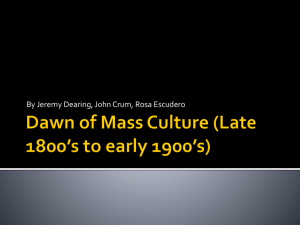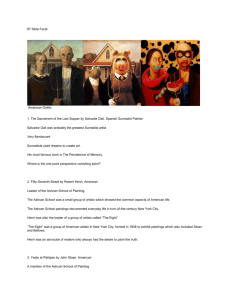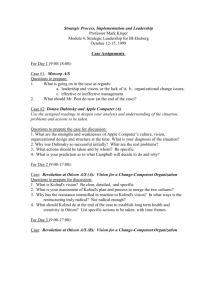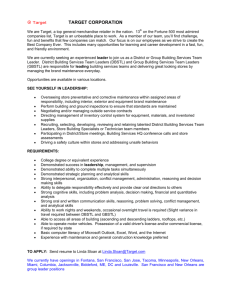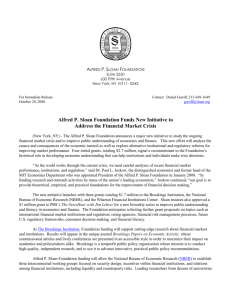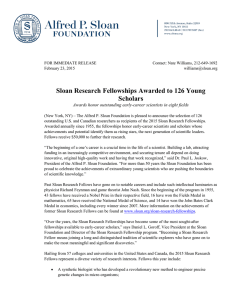PPT
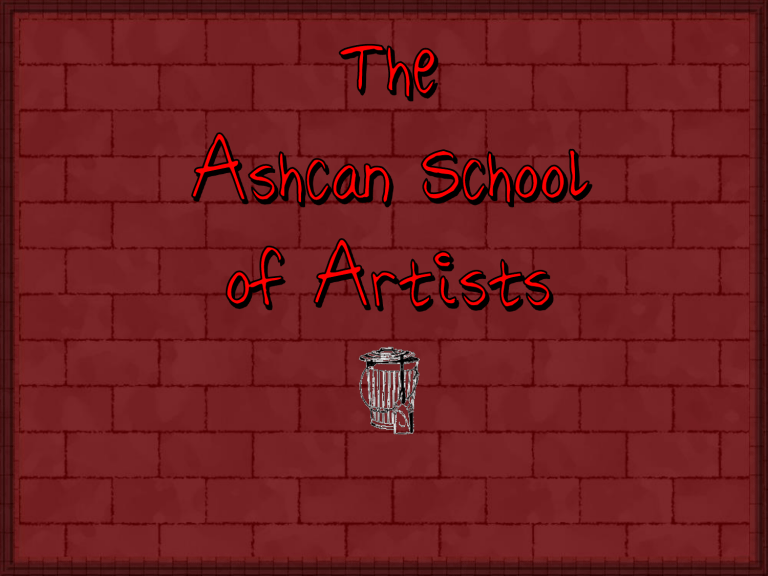
Conservative in style, they were revolutionary in content.
Departure from the staid portraitures and genteel landscapes of the late 19c.
The intent of the artists was not social commentary.
Characteristics of the Ashcan School
1.
Gritty, urban scenes:
- find beauty in the drab and ugly aspects of life.
“Eviction” - Everett Shinn, 1904
“Cross Streets of New York”
Everett Shinn, 1899
“Cliff Dwellers” – George Bellows, 1908
“A Woman’s Work” – John Sloan, 1912
“Night Windows” – John Sloan, 1910
Characteristics of the Ashcan School
2.
Portrayal of urban vitality.
“Madison Square”
Maurice Prendergast, 1901
“The Mall in Central Park”
Maurice Prendergast, 1901
“Hammerstein’s Roof Garden”
William Glackens, 1901
“Recruiting in Union Square”
John Sloan, 1909
Characteristics of the Ashcan School
3.
Captured the spontaneous moments in everyday life.
“Skating in New York”
William Glackens, 1910
“Sunday—Women Dying Their Hair”
John Sloan, 1910
“Winter, Washington Square”
William Glackens, 1907?
Characteristics of the Ashcan School
4.
Illustrated the process of Americanization.
“McSorley’s Bar” – John Sloan, 1912
“A Stag at Sharkey’s Place”
George Bellows, 1917
Characteristics of the Ashcan School
5.
These artists rebelled against the sentimental landscapes of 19c storybook illustrations.
“Fire on 24 th Street”
Everett Shinn, 1907
“Snow in New York” – Robert Henri,
1901
– Education:
• Lyceums
• Chautauqua
• Public schools paid for by taxpayers
• Co-ed universities
• Most religious universities became secularized
(Notre Dame 1842, Holy Cross 1843, Harvard
1844)
• Morrill act and the Hatch Act 1887 (A&M and
Tech schools)
• African American Universities
• Education changes;
– Electives
– Majors (rather than “Liberal Arts”)
– PhD’s.
• Libraries (Carnegie)
– Popular culture becomes “nationalized”
• Newspapers
– Hearst—Examiner
– Pulitzer—the World (Yellow Journalism)
• Magazines of all types
– Liberal
– Conservative
– Socialist
– Ladies Home Journal
– Etc.
• Most books were published as “serial cliffhangers”.
– Dime Novels
– Westerns
– Moral tales and Success Gospel (Horatio
Alger)
Mark Twain:
Symbol of His
Times
• Novelists:
– Mark Twain’s life is a microcosm of change in
America:
• 1867: The Celebrated Jumping Frog of Calaveras
Co. = a lighthearted commentary on the mining camps
• 1876: T om Sawyer = Mostly innocent fun and irony and satire
• 1884: Huck Finn = coming of age story of Jim and
Huck. Condemnation of slavery and racism
• 1898? The War Prayer: An essay opposing the
Spanish-American War
• Poets
– Walt Whitman: Leaves of Grass
– Emily Dickinson (romantic)
• “Intellectuals” or at least they tried
– Henry George : Progress and Poverty . A single
100% tax on “parasites” to economic growth
– Edward Bellamy: Looking Backward.
American
Socialism?? Problems would be solved by technology.
– Lewis Wallace; Ben Hur . Anti-Darwinism
• Popular Entertainment
– Wild West shows
– Barnum and Bailey Circus
– 4th of July “takes off”
– Minstrel Shows
– Operas
– Baseball1891
– Football 1889
– Boxing
– Bicycle clubs: gives girls new freedom
– Basketball 1891
– Reading
– Amusement parks like Coney Island (paid for by trolley companies to increase ridership on weekends, but soon the
“workingman’s resort”.
Started by streetcar companies to increase rider-ship on weekends
DOUBLE
SEE-SAW
FERRIS WHEEL

